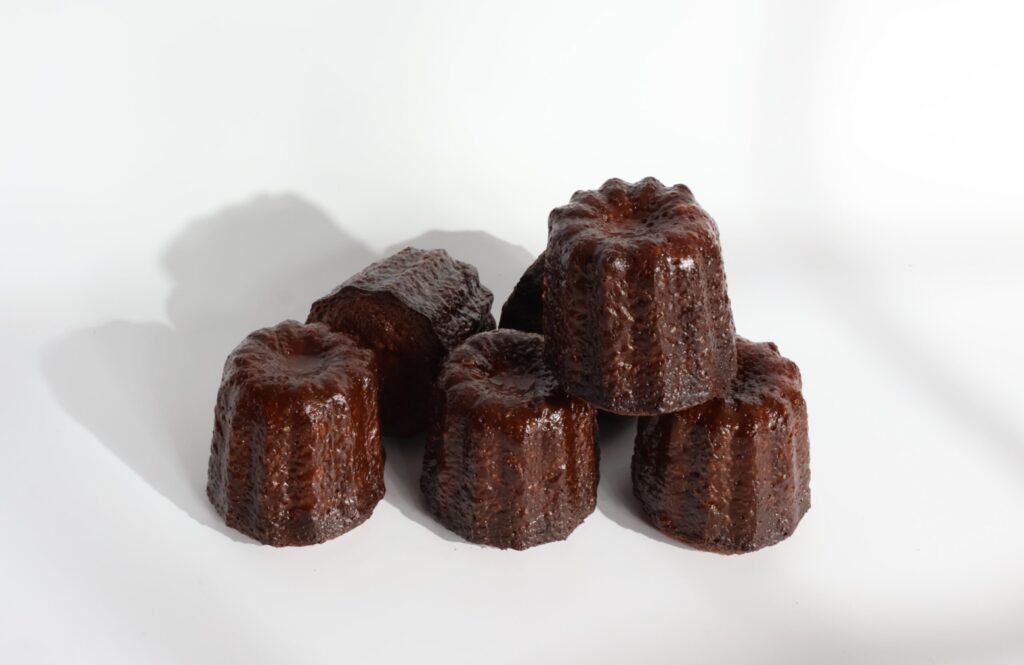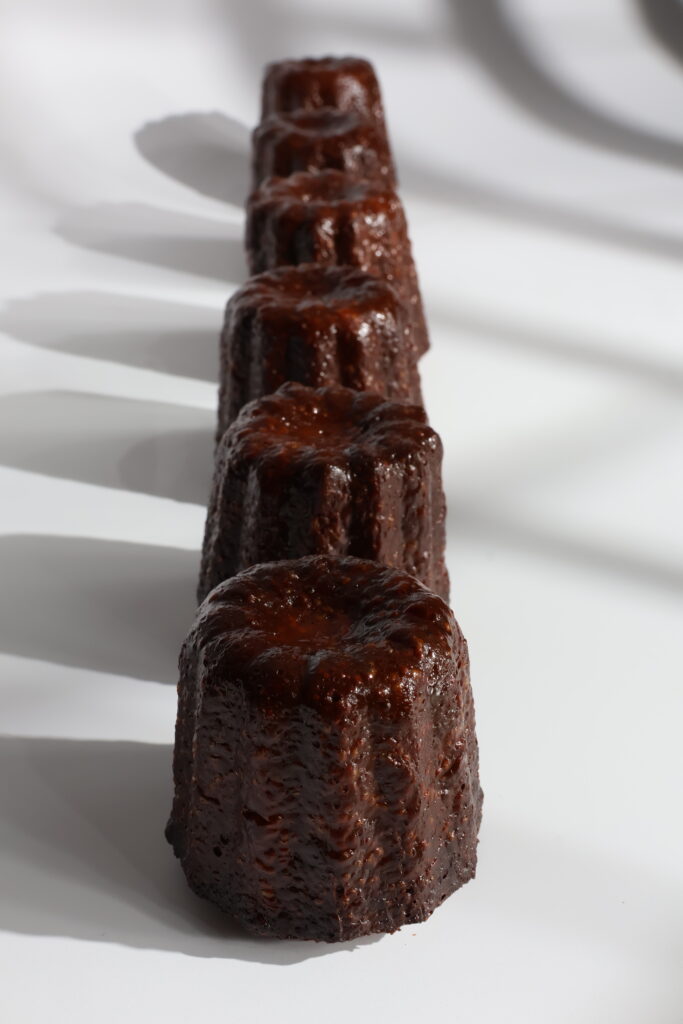



This absolutely DELIGHTFUL French pastry is probably one of my favorites - a Canelé is so much to describe. This Canelés recipe yields a soft, custardy interior that is a bit sponge-like (and I mean a real sponge, in a DELICIOUS way), with a deeply caramelized, crunchy exterior. Typically rested overnight, just soaking in that beautiful vanilla flavor (and any other flavor you add). The ingredients couldn't be more simple - but you do need a special pan. I included some options below.
The Canelé comes from the Bordeaux region of France, and it is often called Canelé de Bordeaux. It is traditionally baked in small cylindrical fluted molds, usually made of copper. This could be where the name comes from - 'Cannelure' (French), meaning fluting, corrugation, striations.
Beeswax was traditionally used to line the molds and is still used today. Many use a mix of beeswax and melted butter, or just butter (like me).
The history is interesting - as is common with these old recipes, attribution of the original recipe is hard to find. As with many French recipes, especially ones with eggs, it is possible it originated at a convent in the 15th or 18th century. There are records of canaule (or canaulé or canaulet) around the 18th century, which could be the same thing.
Canelés kind of disappeared at some point, but reappeared in the early 1900s. The pastry chef who re-popularized the recipe (of canauliers) added vanilla and rum.


This pastry can be spelled as Canelés (de Bordeaux) or Cannelés (de Bordeaux). The Brotherhood of the Canelé of Bordeaux (Confrérie du Canelé de Bordeaux) have it spelled with one 'n' and it kind of became its own "brand." However, some notable bakeries in Paris spell it as Cannelés.
You might be shocked at the simplicity of ingredients for Canelés de Bordeaux:

You might also be shocked at how easy Canelés are to make.
Yes, you do need a special mold for the traditional shape. You can use the mold for many other cakes and things as well! I haven't tried this recipe with any other types of molds, so if you do, let me know how it turns out!
Although they are traditionally made with copper molds, I personally have yet to buy some due to cost. Instead, I use a non-stick pan with 12 cavities. I grease mine with softened butter.
Here are some Canelés pan options (I use the first one):
Canelés are best enjoyed as close to the bake time as possible, and preferably on the same day they are baked (the crust begins to soften). However, you can always refresh them in the oven at 300 Fahrenheit / 150 Celsius for a few minutes. An air fryer would also work (temperature depend on your air fryer).
References: Wikipedia | Canele: https://en.wikipedia.org/wiki/Canel%C3%A9
This delightful French pastry is probably one of my favorites - A canelé is so much to describe. A soft, custardy interior that is a bit sponge-like (and I mean a real sponge, in a DELICIOUS way), with a deeply caramelized, crunchy exterior. Typically rested overnight, just soaking in that beautiful vanilla flavor (and any other flavor you add).
This makes a batch of 6. If you do double the recipe, please see the notes.
Start slow and whisk constantly. You want to temper the mixture, not scramble the eggs.
Straining it will remove the zest and and any small pieces of cooked egg.
The batter can rest anywhere between 12-48 hours.
Doubling the Recipe:
Storing Canelés
Canelés are best enjoyed as close to the bake time as possible, and preferably on the same day they are baked (the crust begins to soften).
However, you can always refresh them in the oven at 300 Fahrenheit / 150 Celsius for a few minutes. An air fryer would also work (temperature depends on your air fryer).
Thank you for supporting me and my blog! <3